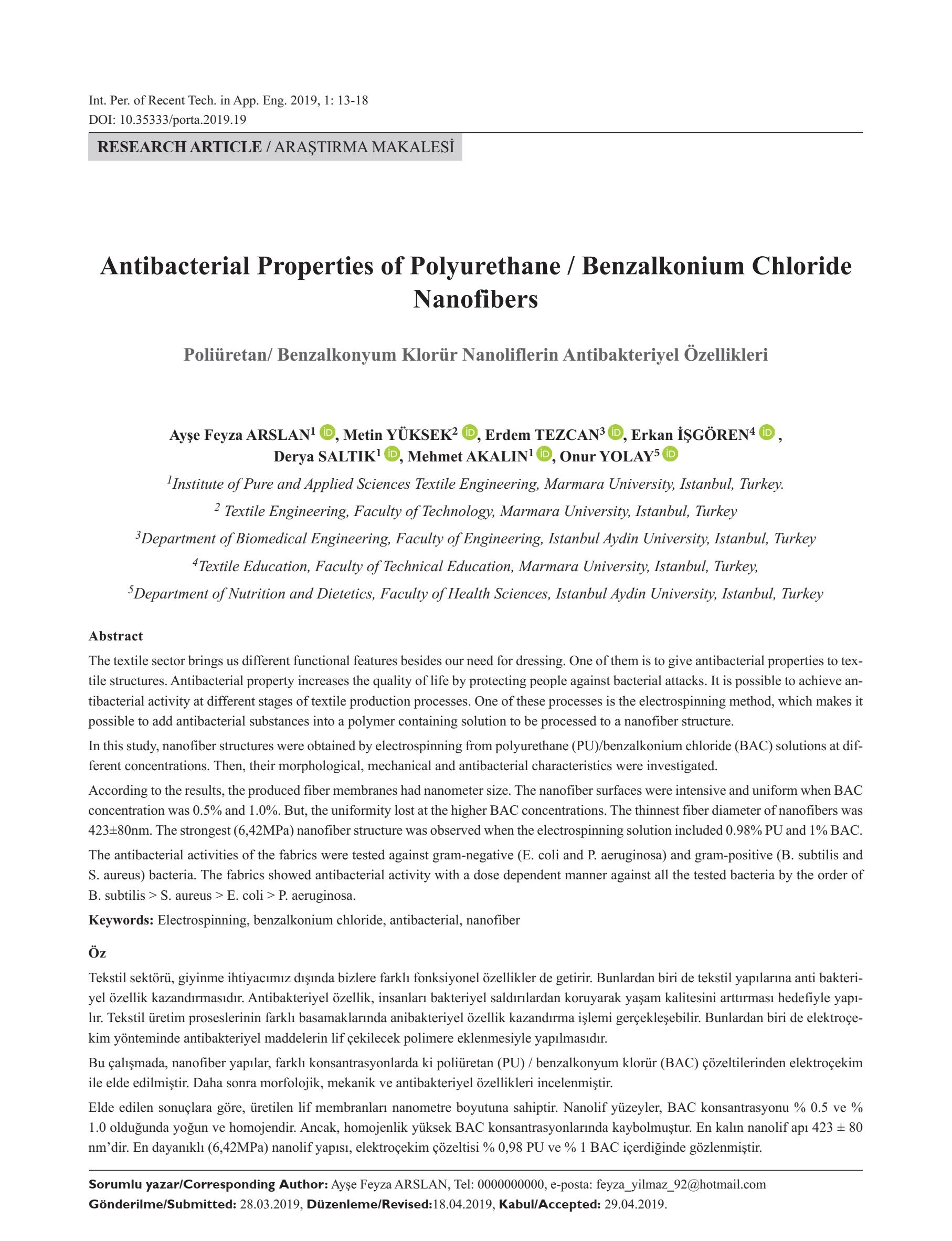Poliüretan/ Benzalkonyum Klorür Nanoliflerin Antibakteriyel Özellikleri
Tekstil sektörü, giydirme ihtiyacımızın yanı sıra bize farklı fonksiyonel özellikler de getirmektedir. Bunlardan biri tekstil yapılarına antibakteriyel özellik kazandırmaktır. Antibakteriyel özellik insanları bakteri saldırılarına karşı koruyarak yaşam kalitesini artırır. Tekstil üretim proseslerinin farklı aşamalarında antibakteriyel aktivite elde etmek mümkündür. Bu işlemlerden biri, nano lif haline dönüştürülecek bir polimer içeren çözeltiye antibakteriyel maddelerin eklenmesini mümkün kılan elektro-eğirme yöntemidir.
Bu çalışmada, farklı konsantrasyonlarda poliüretan (PU)/benzalkonyum klorür (BAC) çözeltilerinden elektroeğirme ile nano lif yapıları elde edilmiştir. Daha sonra morfolojik, mekanik ve antibakteriyel özellikleri incelenmiştir.
Elde edilen sonuçlara göre, üretilen lifli membranlar nanometre boyutundadır. BAC konsantrasyonu %0,5 ve %1,0 olduğunda nano lif yüzeyler yoğun ve tekdüze olmuştur. Ancak, daha yüksek BAC konsantrasyonlarında homojenlik kaybolmuştur. Nano liflerin en ince lif çapı 423±80nm olmuştur. En güçlü (6,42MPa) nano lif yapısı, elektroeğirme çözeltisi %0,98 PU ve %1 BAC içerdiğinde gözlenmiştir.
Kumaşların antibakteriyel aktiviteleri gram negatif (E. coli ve P. aeruginosa) ve gram pozitif (B. subtilis ve S. aureus) bakterilere karşı test edilmiştir. Kumaşlar, B. subtilis > S. aureus > E. coli > P. aeruginosa sırasına göre test edilen tüm bakterilere karşı doza bağımlı bir şekilde antibakteriyel aktivite göstermiştir.
Makalenin tam metni aşağıdaki bağlantıda bulunmaktadır.
https://dergipark.org.tr/tr/download/article-file/818793
